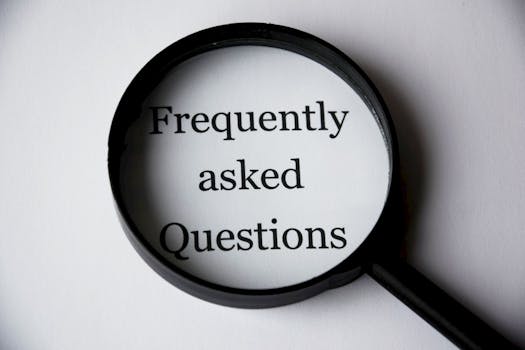SEO Alt Text Best Practices for Accessibility and Rankings
Impact of Alt Text on Search Engine Rankings
Here’s a straightforward list of how alt text can enhance SEO and accessibility.
- Alt text boosts image search rankings. Search engines rely on it to index images accurately.
- Descriptive alt text improves user experience. It ensures visually impaired users understand the content.
- Effective alt text can drive organic traffic. Well-optimized images can appear in search results, attracting more visitors.
- Keywords in alt text enhance SEO. Strategically placed keywords help search engines connect images to relevant content.
- Ignoring alt text can hurt your rankings. Websites without alt text may struggle to rank well in image searches.
- Alt text contributes to overall site accessibility. This is essential for compliance with accessibility standards.
- Structured data can complement alt text. Using schema markup alongside alt text can improve image visibility in search results.
Exploring Alternative Approaches to Alt Text
Most people think that alt text should only describe the image. But I believe it can tell a story or evoke emotions. This approach adds depth and context, making the browsing experience richer for visually impaired users.
While many advocate for straightforward descriptions, I argue that alt text can be more creative. Why not use it to capture the essence of the moment? For instance, instead of saying ‘a cat sitting on a windowsill,’ try ‘a curious cat gazing out at a bustling street, dreaming of adventures.’
Some experts suggest that keywords should be integrated into alt text for SEO. I think that’s fine, but it shouldn’t sacrifice clarity. A keyword-stuffed alt text can confuse users and may even get penalized by search engines.
Another innovative idea is to combine alt text with structured data. This could enhance SEO performance and provide more context about the image. It’s like giving search engines a cheat sheet!
As I see it, the future of alt text lies in its versatility. It can be a tool for accessibility, SEO, and storytelling. It’s time to rethink how we use this often-overlooked element of web design.
According to Romain Berg, “When you add alt text to an image, you’re doing more than just adhering to accessibility standards; you’re boosting your website’s visibility.” This perfectly captures the dual purpose of alt text.
There’s a lot we can do with alt text beyond the basics. Let’s get creative and make our web content more engaging for everyone!
… text) provides a helpful written description of a visual element on your webpage. Accurate alt text is essential for accessibility, UX, and SEO. Screen …
To ensure they have equal access to information, images must include descriptive text alternatives. … Best Practices for Writing Alternative Text. Describe the …
To make your content rank high in search results, work with the EERE SEO Specialist early in the writing process to discuss optimization strategies and keyword …
Search Engine Optimization Best Practices | Department of Energy
Sep 4, 2024 … content (Chapter 5.12) and writing alternative text (or “alt text”) for web images and graphics … Follow SEO best practices to help search …
NAII Website Requirements, Standards, and Best Practices v1.0
Future Trends in Alt Text for Accessibility and SEO
Most folks think that alt text is just about describing images. But I believe it’s evolving into a storytelling tool. Incorporating emotional context or cultural references can create deeper connections. Imagine an alt text that doesn’t just say ‘a dog playing in the park’ but evokes the joy and freedom of a sunny day.
Some experts argue for a strict, functional approach. I think we need to loosen up. Users crave more than basic descriptions. They want to feel something. Adding a narrative element to alt text can enrich the experience for visually impaired users. This isn’t just about compliance; it’s about engagement.
Tools for automating alt text creation are on the horizon. Sure, AI can help, but we shouldn’t rely solely on it. Human creativity is irreplaceable. Automated tools should assist, not replace, the nuanced understanding a person brings to crafting alt text.
As we look ahead, we need to think about how alt text fits into broader digital marketing strategies. It’s not just a technical detail; it’s part of your brand’s story. Integrating alt text into your overall narrative can enhance customer engagement and loyalty.
According to Romain Berg, “When you add alt text to an image, you’re doing more than just adhering to accessibility standards; you’re boosting your website’s visibility.” This is a reminder that alt text is a powerful tool in our SEO arsenal.
Let’s not forget the importance of user feedback. Testing alt text with actual users can reveal what works and what doesn’t. It’s a simple yet effective way to refine our approach and ensure we’re meeting the needs of all users.
Sep 19, 2024 … Boost your SEO rankings … Using alt text checkers and following best practices for alt text creation can significantly enhance the accessibility …
Enhancing Web Accessibility: The Essential Guide to Alt Text …
Feb 27, 2024 … Image alt tags are an essential element of SEO that can improve your website's accessibility, user experience, and ranking. They are the text …
Best Practices for Writing Alt Text
Writing effective alt text is a blend of clarity and creativity. Keep it concise, ideally under 125 characters. This helps screen readers deliver the message quickly. Avoid starting with ‘image of’—it’s redundant!
Focus on context. Describe the image’s function and relevance to the surrounding content. For instance, instead of saying ‘dog in a park,’ try ‘Golden Retriever playing fetch in sunny park.’ This paints a clearer picture.
Many believe alt text should be purely descriptive. I think it can be more engaging. Why not convey emotions or stories? A narrative approach can create a deeper connection. Picture this: ‘Joyful child hugging a fluffy puppy’ instead of just ‘child with puppy.’
Keyword stuffing? A big no-no! It’s tempting to cram in keywords for SEO, but it can backfire. Focus on natural language instead. This keeps it user-friendly and improves your SEO naturally.
Tools for automating alt text creation are rising. These can save time and ensure consistency. But remember, automation shouldn’t replace the human touch. Always review generated alt text for accuracy.
As Romain Berg pointed out, “When you add alt text to an image, you’re doing more than just adhering to accessibility standards; you’re boosting your website’s visibility.” This is a reminder that alt text is a win-win for accessibility and SEO.
Lastly, keep an eye on trends in alt text strategies. Innovative approaches can set your content apart. Let’s embrace creativity while ensuring accessibility!
Sep 27, 2018 … Images are a big source of organic traffic for your blog or website. Here's why and how you should optimize your image alt text for SEO.
Image Alt Text: What It Is, How to Write It, and Why It Matters to SEO
Nov 27, 2023 … Adding alternative text to images on your site is a principle of web accessibility. Alt attributes enable screen readers to read the information …
May 22, 2023 … How to Write Alt Text (Best Practices). Learn how to write alt text that improves your site's accessibility and SEO. … rank in Google image …
Alt Text: What Is It & Why It Matters for Accessibility & SEO
Feb 19, 2024 … Is alt text still recommended to maximize SEO and accessibility even when the page is rich with textual content?
Is adding “alt text” still a best practice even for content-rich sites that …
Common Mistakes to Avoid with Alt Text
Many people think writing alt text is straightforward. But trust me, it’s easy to mess it up. A common error is using vague descriptions like ‘image’ or ‘photo.’ Seriously, what does that tell anyone? It’s not helpful for visually impaired users.
Another huge mistake is keyword stuffing. Some folks cram in keywords, thinking it’ll boost their SEO. Spoiler alert: it won’t. Search engines can penalize you for that. According to UserWay, ‘Effective alt text should be descriptive and relevant, incorporate keywords strategically without keyword stuffing.’
And let’s talk about character limits. Exceeding 125 to 200 characters can confuse screen readers. Keep it concise! You want your alt text to be meaningful, not a mini-essay.
Many believe that decorative images don’t need alt text. I disagree. Even if it’s just a design element, it should have context. This helps maintain a consistent experience for all users.
Some suggest using alt text creatively to tell a story. I think this is brilliant! Instead of just describing the image, why not evoke emotion? It adds depth and makes the experience richer.
For those looking to improve, user testing can be invaluable. Gathering feedback from visually impaired users can reveal common pitfalls. Their insights can guide you to craft better, more effective alt text.
In the end, don’t treat alt text as an afterthought. It’s a critical part of making your content accessible. As Holly Cardew from Pixc says, ‘While it might seem easy to think of alt tags as just an additional unnecessary task, your way better doing it anyway.’
Essential Elements for Crafting Effective Alt Text
Here’s a straightforward list of key elements that make alt text effective for SEO and accessibility.
- Be Descriptive. Clearly describe what’s in the image. Avoid generic phrases.
- Keep It Concise. Aim for under 125 characters. Short and sweet works best.
- Avoid Redundancy. Skip phrases like ‘image of.’ Get straight to the point.
- Context Matters. Provide context that connects the image to the surrounding text.
- Use Keywords Wisely. Incorporate relevant keywords but don’t overdo it. Balance is key.
- Decorative Images Need Attention. Use empty alt attributes for purely decorative images. Don’t leave them out.
- Consider Emotional Context. Instead of just describing, convey feelings or stories behind the image.
- Test with Real Users. Get feedback from visually impaired users to improve your alt text.
- Stay Updated. New tools can help automate alt text creation. Embrace technology.
- Legal Compliance is Key. Ensure your alt text meets accessibility standards to avoid legal issues.
Key Benefits of Including Alt Text for Accessibility
Here are some essential reasons why adding alt text is a must for both accessibility and SEO rankings.
- Alt text boosts accessibility for visually impaired users. It allows them to understand images via screen readers.
- Descriptive alt text improves SEO rankings. Search engines use it to index images effectively, enhancing visibility.
- Well-crafted alt text prevents legal issues. Compliance with accessibility standards protects businesses from potential lawsuits.
- Alt text enriches user experience. It provides context when images fail to load, keeping users informed.
- Incorporating keywords in alt text can enhance SEO. Just avoid keyword stuffing to maintain clarity.
- Alt text can tell a story. This narrative approach can engage users on a deeper level.
- Using AI tools for alt text generation saves time. Automation ensures consistency across large image libraries.
Understanding the Role of Alt Text in SEO
Many people think alt text is just a box to check for accessibility. I believe it’s a powerful tool for SEO. Alt text tells search engines what an image is about, making it easier for them to rank your page.
Most folks write alt text like they’re just filling in a form. But I think it should be engaging and descriptive. Descriptive alt text can significantly boost your SEO rankings.
Many writers forget about context. They just slap on a few keywords. I argue that context is king. Alt text should relate directly to the surrounding content.
Some believe that shorter is better. But I think a bit more detail can go a long way. Crafting alt text under 125 characters while still providing context is a skill worth mastering.
Most experts say to avoid vague terms like ‘image’ or ‘photo.’ I wholeheartedly agree. Those terms don’t help anyone and can confuse screen readers.
Many people stress over keyword stuffing. I think that’s a trap. Instead, focus on clarity and relevance. It’s better to be clear than to stuff keywords in.
Some suggest using AI tools for generating alt text. I’m skeptical. While they can save time, nothing beats a human touch for creativity and context.
According to Romain Berg, “When you add alt text to an image, you’re doing more than just adhering to accessibility standards; you’re boosting your website’s visibility.”
Let’s not forget the emotional aspect. Some think alt text should only describe the image. But I believe it can tell a story or evoke feelings, making the experience richer.
This approach can create a deeper connection with users. It’s about making the web a more inclusive place.
Exploring tools for automating alt text creation is exciting. But I think they should complement, not replace, human input. Combining technology with creativity can lead to great results.
What is alt text and why is it important?
Alt text is a description of an image. It helps visually impaired users understand what’s on the screen. Without it, they miss out on important context.
Many think alt text is just a box to check for accessibility. I believe it’s a golden opportunity for improving SEO. Descriptive alt text can enhance search engine rankings significantly.
For instance, using relevant keywords in alt text can boost visibility. But don’t overdo it; keyword stuffing can backfire. Effective alt text should be concise and meaningful.
Some suggest using alt text to convey emotions or narratives. This approach adds depth and context. It’s not just about describing an image; it’s about creating a connection.
As Romain Berg said, “When you add alt text to an image, you’re doing more than just adhering to accessibility standards; you’re boosting your website’s visibility.” This insight highlights the dual benefits of alt text.
Incorporating alt text is not just about compliance; it’s about inclusivity and better user experience. By neglecting alt text, you risk alienating users and hindering your site’s performance.
So, don’t overlook this simple yet powerful tool. Start crafting thoughtful alt text today!
What are the common errors in alt text creation?
Many people think writing alt text is straightforward. But there are frequent mistakes that can undermine its effectiveness.
One major error is using vague descriptions like ‘image’ or ‘photo.’ This does nothing for users who rely on screen readers. They need context!
Another pitfall? Keyword stuffing! Cramming too many keywords can lead to penalties from search engines. Keep it relevant and concise.
Improper formatting is also a big issue. Exceeding the character limit can confuse screen readers. Aim for under 125 characters.
Some suggest employing user testing to gather insights from those who use screen readers. This feedback could reveal common mistakes often overlooked.
Most folks believe that all images need detailed descriptions. I think decorative images can use empty alt attributes. This approach keeps things clean and clear.
New tools are emerging to help automate alt text creation. But relying solely on these tools without human oversight might miss the nuances of effective descriptions.
As Adam Bennett from Cube Creative Design states, ‘Alt text contributes to SEO, helping search engine crawlers understand the content of images.’ So, let’s not skimp on it!
For more insights, check out Pixc’s guide on alt text best practices.
How can I write better alt text for my images?
Writing better alt text is all about clarity and conciseness. I believe many people get it wrong by using vague terms like ‘image of’ or ‘photo of.’ Instead, describe the image directly and include relevant details.
Most sources suggest keeping it under 125 characters. I think that’s a bit limiting. Sometimes, a few more words can provide necessary context. Just make sure it remains clear and informative.
Many folks emphasize keyword stuffing for SEO. But I totally disagree! It’s better to focus on natural language that genuinely describes the image. This approach keeps your alt text user-friendly.
Some advocate for creative alt text that tells a story or conveys emotion. I think that’s a fantastic idea! It adds depth and can make the browsing experience more engaging for visually impaired users.
Tools for automating alt text creation are emerging. They can save time, but I worry about losing the personal touch. Each image has a unique story, and automation might not capture that.
As for best practices, always remember to tailor your alt text to the context of your content. According to Romain Berg, “When you add alt text to an image, you’re doing more than just adhering to accessibility standards; you’re boosting your website’s visibility”. This perspective really resonates with me!
Incorporate insights from user testing to refine your alt text. Real feedback from visually impaired users can highlight what works and what doesn’t. That’s where the magic happens.
For more on this, check out the SEMrush blog for practical tips and examples.
Can I use AI tools for generating alt text?
Many folks think AI tools can’t capture the nuance of alt text. But I believe they can be a great asset because they save time and maintain consistency across images. Imagine having a tool that generates alt text based on context and content!
Some argue that AI lacks the human touch, making it less effective. I disagree because AI can analyze vast amounts of data quickly, adapting to different styles and tones. According to Oyova, utilizing AI can streamline the alt text process while still adhering to best practices.
Moreover, relying solely on AI isn’t the answer. Combining AI-generated text with human oversight ensures clarity and creativity. It’s that simple! So, let’s embrace technology while keeping our unique voice in the mix.
How does alt text affect my website’s SEO?
Most people think alt text is just a checkbox for accessibility. I believe it’s a powerhouse for SEO. Alt text helps search engines understand images, boosting your rankings.
When you craft descriptive alt text, you’re not just catering to visually impaired users. You’re also making it easier for search engines to index your content. According to Adam Bennett from Cube Creative Design, “Alt text also contributes to SEO, as it helps search engine crawlers understand the content of images and index web pages correctly.”
Many experts suggest sprinkling keywords into your alt text. But I think it’s more about clarity. Keyword stuffing can backfire and hurt your SEO. Focus on being descriptive instead.
Some argue that alt text is just a technical requirement. I think it’s an opportunity for storytelling. Crafting engaging alt text can create a richer experience for users.
Lastly, consider using structured data alongside alt text. This can enhance how search engines interpret your images. It’s a smart way to stand out in search results.
Alt text is a game changer for web accessibility. It ensures that visually impaired users can understand images. Every image deserves a thoughtful description.
Some folks think all alt text needs to be is a simple description. But I believe it should evoke emotion or tell a story. This makes the experience richer for those relying on screen readers.
According to Level Access, “Alt text is essential to make your website accessible to users with disabilities.” This isn’t just a checkbox; it’s a commitment to inclusivity!
Using AI tools for alt text generation? I think they should enhance, not replace, human creativity. Automated systems can miss context and nuance that make alt text truly effective.
Let’s not forget, crafting alt text is about more than just SEO. It’s about creating a welcoming web environment for everyone. So, let’s get it right!
Descriptive alt text is a game changer for SEO. It helps search engines understand your images. This boosts your rankings significantly.
Some say using keywords in alt text is enough. But I think focusing on clarity matters more. Clear descriptions make content accessible and improve user experience.
According to Adam Bennett from Cube Creative Design, “Alt text also contributes to SEO, as it helps search engine crawlers understand the content of images.” That’s a win-win!
Let’s not forget about creativity. Instead of just describing, tell a story. It can resonate more with users and enhance their experience.
Tools for automating alt text creation are on the rise. They save time and keep things consistent. This means better accessibility for everyone!
Most people think using vague terms like ‘image’ is okay. But I believe that specific descriptions are way more effective. They actually help visually impaired users grasp the content of the image.
Keyword stuffing? No way! It doesn’t work and can even get your site penalized. Instead, focus on clarity and relevance.
Consider using a narrative style for alt text. It adds depth and context, creating a richer experience for users. I mean, why not make it engaging?
According to UserWay, “Effective alt text should be descriptive and relevant, incorporate keywords strategically without keyword stuffing.” This approach aligns perfectly with SEO goals.
Let’s not forget about the future! Exploring AI tools to automate alt text creation could save time and ensure consistency across sites. This is where innovation meets accessibility!
Most people think alt text should be purely descriptive. I think it should tell a story because it engages users on a deeper level. Imagine an image of a sunset. Instead of saying ‘sunset over the ocean,’ try ‘a fiery sunset kisses the waves, whispering secrets of the day.’ This paints a picture in the mind.
Descriptive text is great, but adding emotion can transform the experience. According to Romain Berg, ‘When you add alt text to an image, you’re doing more than just adhering to accessibility standards; you’re boosting your website’s visibility.’ Let’s not just describe—let’s connect!
Using a narrative approach can make alt text memorable. It’s about crafting moments that resonate. Just think, what story does your image tell?
Most people think manual alt text creation is the only way. I believe automation tools can save time and ensure consistency. Imagine a world where AI effortlessly generates alt text for you!
Tools like image recognition software can analyze images and suggest relevant descriptions. This can boost accessibility without sacrificing quality. According to Romain Berg, “AI tools can streamline the process while maintaining clarity.”
It’s that simple! Embrace innovation to enhance your SEO strategy and accessibility. Consider exploring these tools to stay ahead of the game!

Albert Mora is an internationally renowned expert in SEO and online marketing, whose visionary leadership has been instrumental in positioning Seolution as a leader in the industry.









